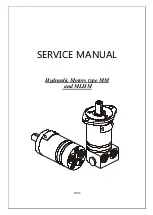
Note:
If it is possible, first diagnose the reason for the
starting failure. Make any necessary repairs. If the
engine will not start only due to the condition of the
battery, either charge the battery, or start the engine
with jump start cables. The condition of the battery
can be rechecked after the engine has been switched
OFF.
NOTICE
Using a battery source with the same voltage as the
electric starting motor. Use ONLY equal voltage for
jump starting. The use of higher voltage will damage
the electrical system.
Do not reverse the battery cables. The alternator can
be damaged. Attach ground cable last and remove
first.
When using an external electrical source to start the
engine, turn the generator set control switch to the
“
OFF
”
position. Turn all electrical accessories OFF
before attaching the jump start cables.
Ensure that the main power switch is in the OFF posi-
tion before attaching the jump start cables to the en-
gine being started.
1.
Turn the start switch to the OFF position. Turn off
all the engine's accessories.
2.
Connect one positive end of the jump start cable to
the positive cable terminal of the discharged
battery. Connect the other positive end of the jump
start cable to the positive cable terminal of the
electrical source.
3.
Connect one negative end of the jump start cable
to the negative cable terminal of the electrical
source. Connect the other negative end of the
jump start cable to the engine block or to the
chassis ground. This procedure helps to prevent
potential sparks from igniting the combustible
gases that are produced by some batteries.
4.
Start the engine.
5.
Immediately after the stalled engine is started,
disconnect the jump start cables in reverse order.
After jump starting, the alternator may not be able to
fully recharge batteries that are severely discharged.
The batteries must be replaced or charged to the
correct voltage with a battery charger after the engine
is stopped. Many batteries which are considered
unusable are still rechargeable. Refer to Operation
and Maintenance Manual, “Battery - Replace” and
Testing and Adjusting Manual, “Battery - Test”.
i06791278
After
Starting
Engine
Note:
In
temperatures
from
0°C
to
60°C
(32°F
to
140°F),
the
warm-up
time
is
approximately
3
minutes.
In
temperatures
below
0°C
(32°F),
extra
warm-up
time
may
be
required.
When
the
engine
idles
during
warm-up,
observe
the
following
conditions:
• Check for any fluid or for any air leaks at idle rpm
and at one-half full rpm (no load on the engine)
before operating the engine under load. This
action may not be possible in some applications.
• Operate the engine at low idle until all systems
achieve operating temperatures. Check all gauges
during the warm-up period.
Constant speed engines should be allowed to
operate at low idle for 3 minutes before used at
operational speed. If the low idle option is not
available, then operate the engine at operational
speed with no load for 2 minutes.
Note:
Gauge readings should be observed and the
data should be recorded frequently while the engine
is operating. Comparing the data over time will help
to determine normal readings for each gauge.
Comparing data over time will also help detect
abnormal operating developments. Significant
changes in the readings should be investigated.
28
M0105633-01
















































